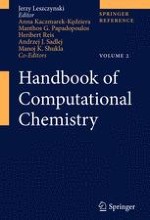2012 | OriginalPaper | Buchkapitel
The Position of the Clamped Nuclei Electronic Hamiltonian in Quantum Mechanics
verfasst von : Brian Sutcliffe, R. Guy Woolley
Erschienen in: Handbook of Computational Chemistry
Verlag: Springer Netherlands
Aktivieren Sie unsere intelligente Suche, um passende Fachinhalte oder Patente zu finden.
Wählen Sie Textabschnitte aus um mit Künstlicher Intelligenz passenden Patente zu finden. powered by
Markieren Sie Textabschnitte, um KI-gestützt weitere passende Inhalte zu finden. powered by
